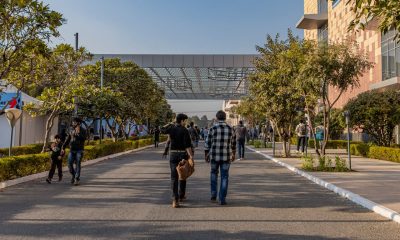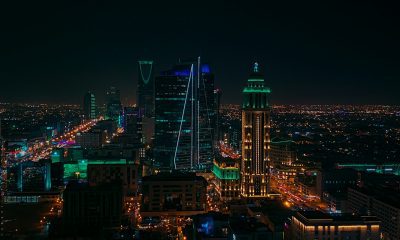Art and Culture
Arctic architecture Canada’s entry to Venice Biennale
From the land of snowdrifts to the city of canals—five designs that use architecture to address the realities of Inuit life in Nunavut are Canada’s entry to this year’s Venice Biennale, one of the world’s top showcases for builder’s art.
“We all have the images of the Arctic that we get in National Geographic,” said Lola Sheppard, a Toronto architect and a curator of the Arctic Adaptations show that is to open in Venice in June.
“But the physical, tangible realities of what it is to live in the North and what are the daily realities—what is a road? What do commutes look like? How do you get things there?—I think those things remain unknown. I think that’s a really interesting and important story to tell.”
The show brings students from five of Canada’s top architecture schools together with architects working in the North and with various Nunavut organizations. The resulting designs address themes of health, arts, recreation, housing and education.
Some take traditional ideas of building and transpose them to unusual sites. Dalhousie University’s take on what an arts centre might look like locates the building right at the breakwater that separates Iqaluit’s beach from Frobisher Bay, putting a performance space in the middle of where many locals work and play.
Other designs don’t even look like architecture.
On the recreation theme, University of Manitoba students present an idea for a network of trails linking five communities along the west coast of Hudson Bay. The trails would be signed by glowing markers and studded with small shelters, all powered by an array of 265 windmills that would also feed into the local grid.
All of the proposals take Inuit ideas seriously.
The University of Toronto’s idea for housing includes private and public spaces clustered together to cut wind and snow accumulation, with areas that could be used for everything from carving to butchering a caribou. The health proposal, from the University of British Columbia, addresses the importance of the land—and Nunavut’s mental-health issues—with “healing spaces” in communities and out on the tundra.
For education, the Universite de Montreal proposes small, decentralized pavilions strung out across the territory and linked by modern communications technology—“a contemporary echo of traditional Inuit architecture,” the designers say.
The trick, said Sheppard, is to design something with authentic roots that doesn’t resort to inukshuk-ridden cliche.
“Part of what the whole exhibition seeks to ask is: ‘What is a modern vernacular that is rooted in place and culture and geography?’ We need to figure out a language that doesn’t yet exist.”
Fancy architecture may seem like a frill in a territory with so many pressing social and economic issues. But Sheppard said that, like public education, good building is a long-term investment that pays off.
“The idea of making places that have a sense of identity, that have a sense of collectivity—and that work—are crucial.”
Iqaluit is full of developments, lifted directly from southern models, that have aged badly, such as much of the Nunavut capital’s housing. Many of its older public buildings were clearly designed by southern experts who thought they knew best.
One of its schools has no windows. It was thought that Inuit children, accustomed to 24-hour dark, wouldn’t miss them.
Sheppard, politely, calls them “emblematic of a moment in time.”
Nunavummiut, increasingly town-dwellers, deserve better, she said.
“These places are here to stay now. They’re communities that will be here for hundreds of years.
“One can always say, ‘Let’s wait.’ But we’ve made enough mistakes in our southern cities. We can’t always just be solving a problem that’s immediate.”
The Arctic Adaptations show is to open in Venice on June 7. About 300,000 people are expected to see it at the Biennale, often referred to as the “Olympics of architecture.” Canada is one of 30 nations with a permanent pavilion.
The Arctic exhibit returns to Canada in the fall and is expected to tour nationally in 2015.






















